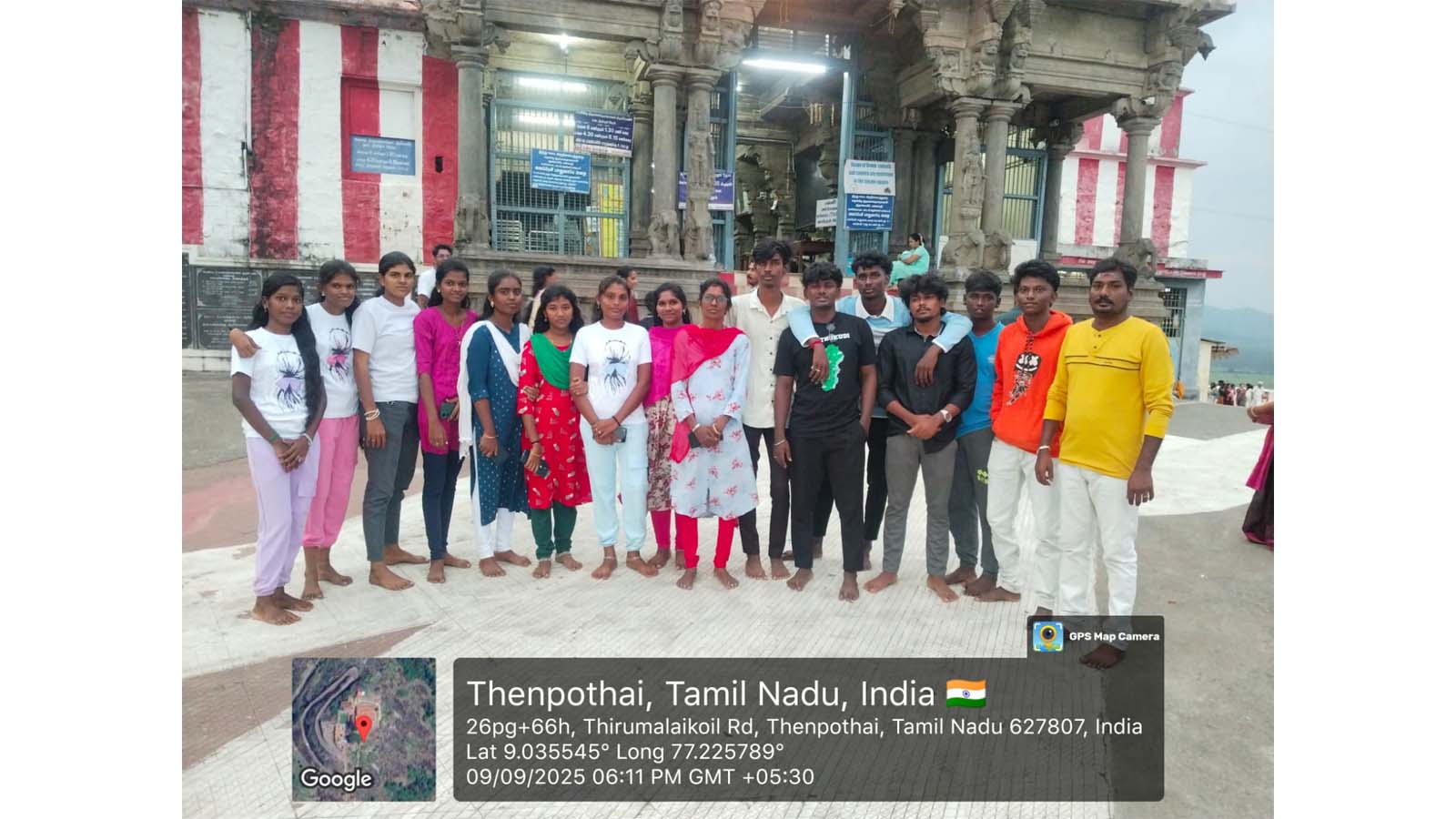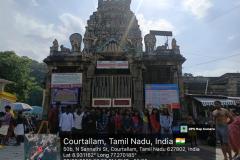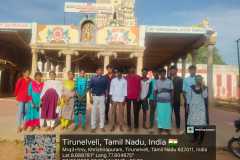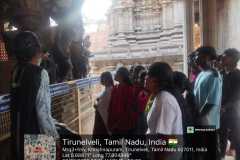
Transformative Learning through Field Trip Tenkasi District 2025 | History Department
Field Trip Tenkasi District 2025
The Department of History at Kamaraj College (Autonomous), Thoothukudi, successfully organized an enriching Field Trip Tenkasi District 2025 for the students of III B.A. History on 9th September 2025. The educational visit was designed to provide hands-on exposure to the rich temple architecture and sculpture traditions of Tamil Nadu. By exploring heritage sites in the Tirunelveli and Tenkasi districts, students gained valuable insights that extended beyond classroom learning.
This field trip exemplified the department’s vision of blending theoretical study with practical understanding, allowing students to witness first-hand the grandeur of South Indian temples and their cultural significance.
Objective of the Field Trip Tenkasi District 2025
The primary aim of the Field Trip Tenkasi District 2025 was to help students connect historical knowledge with physical evidence of cultural and architectural heritage. Studying temple architecture in textbooks provides only limited understanding, whereas direct observation of structures, sculptures, and inscriptions allows learners to appreciate their historical depth.
The History Department emphasized that such trips nurture critical thinking, observation skills, and historical analysis. The students were encouraged to interpret the symbolism behind temple sculptures, understand the evolution of architectural styles, and recognize the socio-cultural context in which these monuments were built.
Sites Visited During the Field Trip
As part of the Field Trip Tenkasi District 2025, students visited several temples of great historical and cultural significance.
- Krishnapuram Temple
Located near Tirunelveli, the Krishnapuram Temple is celebrated for its intricate stone carvings and majestic sculptures. Students observed the unique iconography and architectural features that reflect the artistic excellence of the Nayak period. - Panpozhi Thirumalaikumarasamy Temple
The visit to Panpozhi offered students a chance to witness Dravidian architecture in its authentic form. The temple’s sacred ambience and detailed carvings highlighted the cultural practices of the region and gave students an understanding of temple construction in hilly terrains. - Courtallam Courtralanathar Swamy Temple
This famous temple, dedicated to Lord Shiva, stands as a symbol of spiritual devotion and architectural brilliance. Situated in the heart of Courtallam, the temple is surrounded by waterfalls and natural beauty. Students studied both the sculptures and inscriptions, which revealed valuable details about religious practices and patronage in ancient times.
Learning Outcomes of the Field Trip
The Field Trip Tenkasi District 2025 provided multiple learning outcomes for the History students:
- Understanding Temple Architecture: Students observed gopurams, mandapams, and vimanas closely, connecting architectural terms with real structures.
- Appreciation of Sculptural Art: By examining stone carvings, students understood iconographic representation and narrative storytelling through sculptures.
- Historical Context: Discussions on the socio-political background of temple construction helped link architecture with regional history.
- Skill Development: The trip improved students’ ability to conduct field-based historical analysis, take notes, and prepare detailed reports.
Student Participation and Engagement
More than forty students from III B.A. History took part in the Field Trip Tenkasi District 2025. Accompanied by their faculty members, they actively engaged in discussions at each site, asked questions about symbolism and construction techniques, and related the observations to their academic syllabus.
The faculty guided the students in interpreting inscriptions and explained the evolution of temple architecture across dynasties. The hands-on nature of the trip sparked curiosity and enthusiasm among the learners.
Role of the Faculty
The faculty members of the History Department played a vital role in planning and executing the Field Trip Tenkasi District 2025. They ensured that the itinerary was academically beneficial and that students could cover a variety of temples within the given timeframe. During the visits, teachers highlighted architectural elements, explained sculptural motifs, and connected the findings with historical sources. Their guidance ensured that students not only enjoyed the trip but also gained structured learning outcomes.
Importance of Field Trips in History Education
Field trips like the Field Trip Tenkasi District 2025 are integral to history education. They bridge the gap between classroom learning and real-world heritage. Students who see historical structures in person develop deeper respect for cultural heritage and a stronger sense of identity.
By visiting living monuments, learners also realize the importance of preserving temples, sculptures, and inscriptions for future generations. Such experiences foster both academic knowledge and cultural responsibility.
Conclusion
The Field Trip Tenkasi District 2025 organized by the Department of History at Kamaraj College was a remarkable success. Students of III B.A. History enriched their knowledge of temple architecture and sculpture through direct observation and guided interpretation. The visits to Krishnapuram Temple, Panpozhi Thirumalaikumarasamy Temple, and Courtallam Courtralanathar Swamy Temple provided a holistic understanding of Tamil Nadu’s cultural heritage.
This initiative highlighted the college’s dedication to offering experiential learning opportunities. By engaging students with history outside the classroom, Kamaraj College continues to uphold its tradition of nurturing academically strong and culturally aware graduates.



